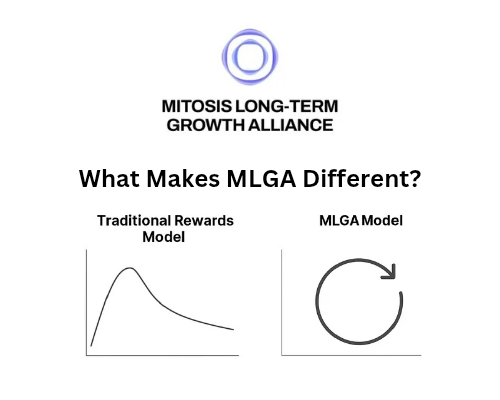Liquidity Capital Market: A New Era in DeFi with Mitosis

Decentralized Finance (DeFi) has revolutionized financial markets, allowing users to transact, lend, and earn yields without intermediaries. However, DeFi liquidity remains fragmented, inefficient, and often inaccessible to retail participants. Mitosis introduces a Liquidity Capital Market (LCM)—a structured, programmable financial system that redefines how liquidity is supplied, traded, and optimized across decentralized ecosystems. By tokenizing liquidity positions and integrating advanced financial instruments, Mitosis aims to unlock new levels of capital efficiency and market transparency. In traditional finance, liquidity forms the backbone of economic activity, determining the efficiency of lending, trading, and investment vehicles. Yet, in DeFi, liquidity provision mechanisms are often short-sighted, leading to volatile Total Value Locked (TVL), information asymmetry, and capital inefficiency. Mitosis addresses these structural flaws by building a programmable liquidity ecosystem, introducing tokenized LP positions, lending markets, yield-bearing stablecoins, and liquidity indices.
This article explores the transformative role of Mitosis in creating a sustainable, high-efficiency liquidity capital market that enhances price discovery, risk-adjusted returns, and long-term sustainability in DeFi.
The Role of AMMs, Lending Markets, and Stablecoins in Mitosis
Automated Market Makers (AMMs), lending protocols, and stablecoins are essential pillars of liquidity provisioning in DeFi. Mitosis redefines these elements by embedding programmability into liquidity itself. Unlike conventional AMMs, which rely on static liquidity pools with high slippage risks, Mitosis enables deep, structured liquidity through miAssets and maAssets—tokenized representations of liquidity provider (LP) positions. These assets facilitate dynamic reallocation, reducing inefficiencies associated with impermanent loss and pool imbalances. Lending markets in Mitosis take capital efficiency a step further. By integrating tokenized LP positions as collateral, Mitosis enables users to borrow against yield-generating assets without withdrawing their liquidity from underlying protocols. This approach eliminates the opportunity cost of idle capital, allowing for leveraged yield farming, collateralized lending, and complex risk-managed strategies. Moreover, lending markets enhance DeFi stability by mitigating mercenary liquidity behaviors, where capital rapidly migrates in search of short-term incentives. Stablecoins within Mitosis are not merely price-pegged instruments but yield-bearing financial assets. Unlike traditional stablecoins, which derive stability from fiat reserves or algorithmic adjustments, Mitosis introduces stable assets backed by diversified liquidity positions across DeFi. This anchors price stability and ensures that stablecoin holders passively earn returns, aligning incentives between liquidity providers, borrowers, and market participants. Integrating yield-generating stable assets further strengthens capital retention within the ecosystem, reducing reliance on inflationary incentives.
Yield Tokenization and How It Enhances Capital Efficiency
One of Mitosis' most groundbreaking innovations is yield tokenization—the ability to separate principal assets from their yield components. Traditional LP positions are inherently illiquid and rigid as they remain locked in liquidity pools without tradable ownership claims. Mitosis resolves this by introducing MLF Assets (Mitosis Liquidity Framework Assets), which enable LP positions to be fractionalized, traded, and optimized across financial markets. By tokenizing yield streams, Mitosis allows DeFi participants to speculate on future returns, hedge against volatility, and dynamically reallocate liquidity. For example, instead of waiting for accrued interest, users can trade yield-bearing tokens in secondary markets, unlocking instant liquidity without disrupting capital deployment. This also facilitates the emergence of structured financial products, such as fixed-income instruments, leveraged yield strategies, and derivative markets built on tokenized LP positions. Static asset deployment has historically hindered capital efficiency within DeFi. Mitosis' approach unlocks new capital flows by ensuring that liquidity is not merely supplied but also actively utilized. Whether through structured lending, yield speculation, or collateralized borrowing, Mitosis enhances asset productivity across decentralized markets, reducing liquidity fragmentation and increasing market depth.
Liquidity Indices and Their Role in Risk-Adjusted Yield Farming
Yield farming has been a double-edged sword in DeFi—offering high rewards but exposing participants to unsustainable risks, volatility, and impermanent loss. Mitosis introduces Liquidity Indices, a novel mechanism that aggregates LP positions into diversified portfolios, allowing users to optimize risk-adjusted returns rather than chasing unsustainable APRs. Liquidity indices function similarly to exchange-traded funds (ETFs) in traditional finance, offering exposure to multiple yield-generating opportunities within a single instrument. By holding a basket of LP positions across protocols, indices mitigate the risks associated with single-platform failures, incentive exhaustion, or protocol-specific exploits. Participants can tailor their risk exposure by choosing between high-yield, balanced, or conservative index compositions, optimizing capital allocation based on market conditions. Furthermore, liquidity indices in Mitosis enable automated rebalancing, portfolio hedging, and structured risk management. Users no longer need to manually rotate liquidity between protocols in response to changing market conditions; instead, they can leverage algorithmic liquidity rebalancing strategies that dynamically adjust exposure to the most optimal pools. This approach not only enhances yield stability but also ensures that liquidity remains consistently allocated to productive, sustainable yield sources. By standardizing DeFi liquidity into structured financial products, Mitosis establishes the foundation for a mature, institutional-grade liquidity capital market. Whether through passive yield farming, derivative speculation, or automated risk-adjusted strategies, liquidity indices empower users with higher capital efficiency, reduced volatility, and long-term sustainability.
Conclusion
The rise of Mitosis marks a paradigm shift in DeFi liquidity provisioning, transitioning from fragmented, inefficient capital allocation models to a structured, programmable liquidity capital market. By integrating AMMs, lending markets, and stablecoins into a unified liquidity framework, Mitosis enhances transparency, price discovery, and capital efficiency across DeFi. Yield tokenization unlocks new opportunities for financial engineering, allowing liquidity provider positions to be traded, collateralized, and optimized rather than passively locked in pools. This introduces dynamic liquidity reallocation, secondary yield markets, and structured financial products, enabling a more efficient, flexible, and sustainable DeFi ecosystem. Liquidity indices revolutionize risk-adjusted yield farming, ensuring that participants optimize capital allocation while mitigating exposure to unsustainable incentives. Through automated portfolio management, composable liquidity structures, and diversified investment strategies, Mitosis creates a robust liquidity capital market that bridges the gap between traditional finance and decentralized ecosystems. As DeFi matures, the question remains: Will liquidity capital markets become the foundation for long-term DeFi sustainability, or will short-term speculative behaviors continue to dominate? Mitosis provides a compelling blueprint, but its success depends on the collective adoption of structured, programmable liquidity across decentralized markets.
In the evolving landscape of DeFi, Mitosis is not just a liquidity network—it is the infrastructure for the next era of decentralized financial markets.

Comments ()